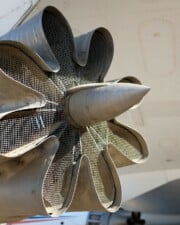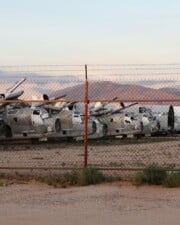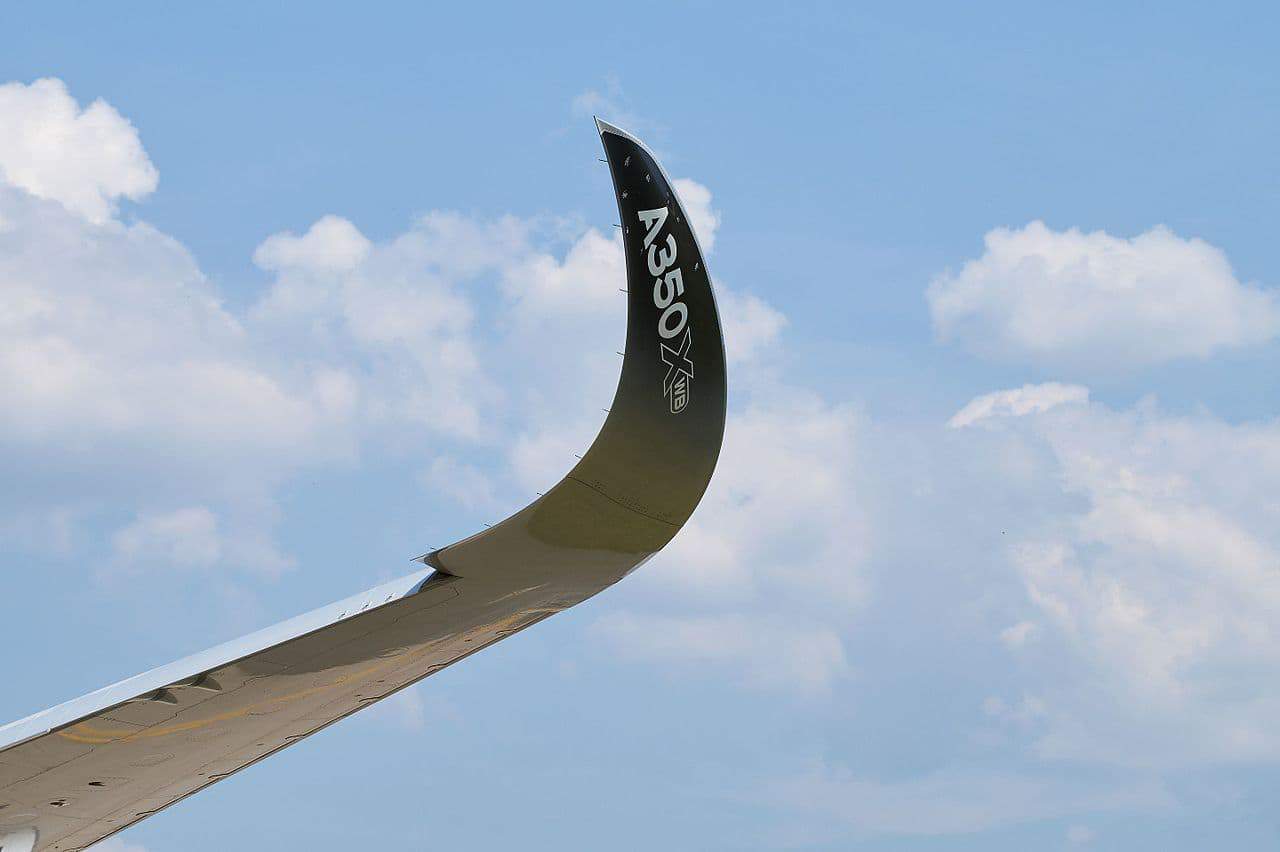There is a lot of impressive technology in the aviation industry, and a lot of technology is being developed. There are also some impressive aviation feats of ingenuity that are a bit older such as refueling airplanes while in flight. But how do airplanes refuel in the air?
How Do Airplanes Refuel In The Air?
Refueling mid-air is also referred to as aerial refueling, which is the pumping of fuel from one aircraft, the tanker, to another aircraft, the receiver while in flight. The procedures require that the aircrafts fly in formation. A hose, a basket or drogue is used to connect the aircrafts and a seal is formed on the connection after which a signal is sent by the pilot to start the pumping.
The types of refueling systems
There are two types of refueling systems, and they are the probe-and-drogue and the flying boom. There is also a combination of the two available as well. The main two are described below:
The probe-and-drogue is an easier method to adapt to existing aircraft. The engineer unrolls a long hose from a wingtip or below the fuselage. There is a basket or a drogue at the end of the hose that looks like a windsock.

Once the hose has reached the maximum extension, the receiver pilot must insert a retractable probe into basket or drogue. The retractable probe is mounted on the plane’s nose. The engineer and the receiver pilot must gently maneuver the probe so that it will latch into the basket.
If it is maneuver too hard, it will stab the drogue and cause the hose to bunch up and fly away. The tanker will start pumping only when there is a seal between the basket or drogue and the retractable probe.
The flying boom is a method that requires a dedicated operator who sits at the back of the tank. He navigates a telescope tube into a receptacle which is located near the front of the receiver plane.

A signal is sent to the tanker to begin pumping aviation gas when the boom latches. The flying boom can pump a lot more fuel than the probe-and-drogue. This is efficient for large airplanes which have much larger fuel tanks.
The challenges and the benefits of aerial refueling
There are many advantages to refueling in the air. Both the flying boom and drogue systems operate over a range of altitudes and flight speeds. Each type of receiver has an altitude and a speed range at which to refuel.
Thus, the tanker must match the receiver’s speed by either speeding up or slowing down. The receiver’s maximum altitude can force the tanker to fly at a lower elevation. The speed and weight are factors that can influence each aircraft.
The result of altitude, weight and speed can cause numerous variation in the field that surrounds the tanker. The refueling systems for the tanker are complicated. They must be designed to address the altitude, speed and weight.

The refueling system requires flight testing, wind tunnel testing, simulation and computational modeling. However, there are many benefits to aerial refueling. The benefits include:
- Aerial refueling enables the pilot to fly further without landing.
- Because aircraft can be topped in the air, it can reduce the load on an airplane making it possible to carry other payloads such as personnel, weapons or cargo.
- Air-to-air refueling can help rescue pilots coming out of dangerous regions or combat airspace.
- Refueling mid-air can extend the combat radius for pilots on more complex missions.
- The airplane engines must work harder when the plane is carrying heavy loads the same as with a car going up a hill. Flying with less fuel and refueling in the air is more energy efficient. It is estimated that air-to-air refueling saves 35 to 45 per cent in fuel costs.
Uses: Aerial Refueling
Both methods of refueling are effective in transferring aviation fuel. The flying boom is more natural to connect because it is flown to the receiver aircraft and the pilot hold the hose in position.
Some tankers can hold up to 29,000 gallons of gas. The flying boom can pump the fuel faster as much as almost 900 gallons per minute. This is important because some airplanes with large fuel tanks require that the fuel be dispensed quickly.
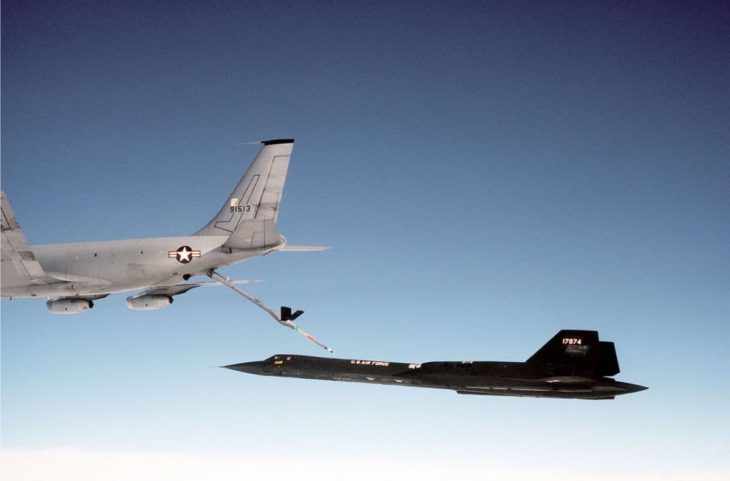
However, the tankers with probe-and-drogue systems can only refuel two maybe three planes at a time. The Air Force uses flying booms, whereby the receiving planes fly in formation to the tanker.
The Navy, Marines and the Army use probe-and-drogue, whereby a flexible hose is used with a drogue or a basket on the end. The probe-and-drogue system can pump 200 to 300 gallons per minute.
But, there are aircraft that can carry or hold multiple basket or drogues, which allows at least two aircrafts to refuel at a time. This system works effectively in refueling helicopters and fighter planes.
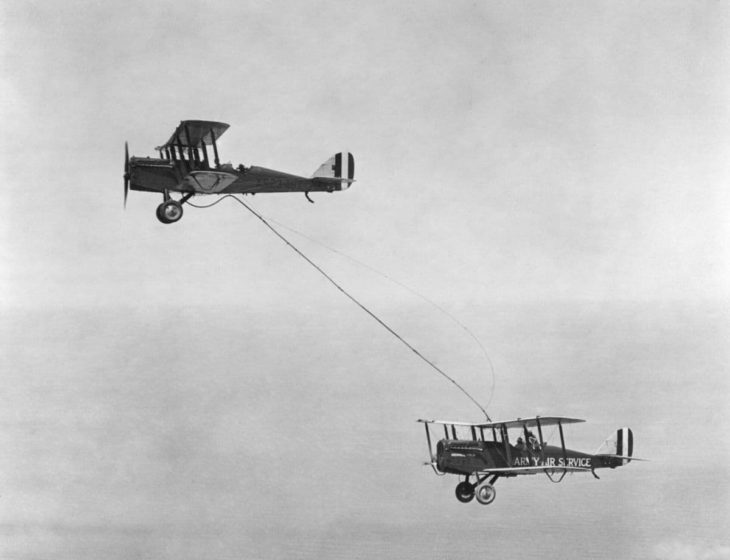
Early history
Alexander de Seversky, an engineer, who worked for the US War Department, invented the aerial refueling process, which is a patent innovation.
The United States used aerial refueling as a tactical advantage, and they had the biggest fleet of aircraft. The process is now practiced by air forces worldwide.
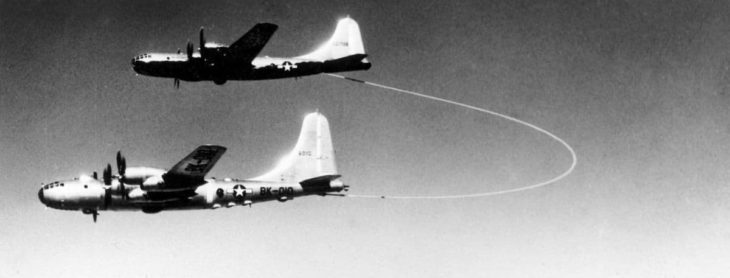
There were a number of successful transfers in the early years. Some of them include:
- In 1921, the first aerial refueling took place between the Lincoln biplane and a Curtis Jenny airplane.
- In 1923, two aircraft flew slow and in formation. One plane ran a hose from a hand-held fuel tank to a fuel filler on the other.
- In July 1923, a mid-air-refueling occurred between two of the Army’s Airco biplanes.
- In August 1923, a record was set for endurance between a receiver and two tanks. The receiver airplane stayed aloft for 37 hours using nine mid-air refueling to transfer almost 700 gallons of aviation gasoline and nearly 40 gallons of engine oil.
- In October 1923, the utility of the technique was demonstrated when an aircraft flew from Washington to Canada to Mexico, landing in San Diego, mid-air refueling in Oregon and Sacramento.
Aerial fueling with other aircrafts
1. Civilian aircraft: Commercial and private airplanes are not designed for air-to-air refueling.
2. The presidential plane: Air Force One can be refueled in flight.
3. Combination of air boom and probe-and-drogue: There is a new United States Air Force tanker with both flying boom and probe-and-drogue refueling.
It can transfer fuel at a rate of 1,200 gallons per minute to a receiver through a flying boom and 400 gallons per minute through the hose-and-drogue system.
The tanker can refuel multiple aircraft at the same time. The boom-automated controls and autopilots, as well as lighting systems and advanced cameras, makes aerial refueling improved and routine for the air forces fleets.
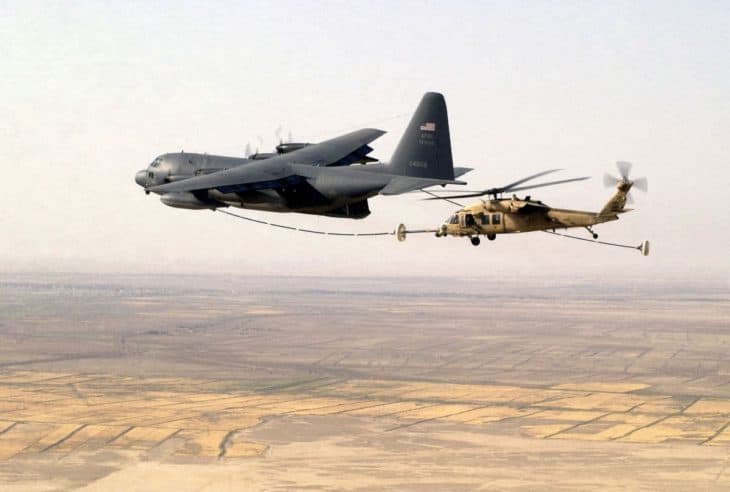
4. Helicopter aerial refueling: Helicopters are a necessary and a vital asset for many operations. Air-to-air refueling with helicopters can be a bit complicated.
With the usual air-to-air refueling, two airplanes must operate at a range of altitudes and speeds. One airplane must speed down or slow down to match the receiver’s refueling speed.
Since a helicopter does not have wings, it makes it challenging to transfer fuel from a tanker to a helicopter. The problem lies in the speed of the airplane and the helicopters.
The tanker must be able to go slow enough for the helicopter, or the helicopter must go fast enough for the tanker. The pipe must be long enough to connect the tanker and the helicopter, and it must be far enough from the helicopter spinning blades.
There are a number of helicopters capable of refueling mid-air. Some of them include the HH-60G Pave Hawk, and the Sikorsky CH-53E Super Stallion, among others.
This refueling is possible with a helicopter from the French Air Force and a tanker, MC-130 from the U.S. Air Force. The French helicopter, the Eurocopter EC 725 Caracal (Now the Airbus Helicopters H225M) can reach a speed of up to 175 miles per hour. The U.S. Air Force tanker, MC-130 (Lockheed Martin C-130J Super Hercules) has a stall speed of 115 miles per hour. So there is plenty of overlap in the max speed.
The MC-130 cargo not only can refuel a helicopter but it has radar that avoids terrain, and it can operate at 250 feet in unfavorable weather conditions.
Related Posts


